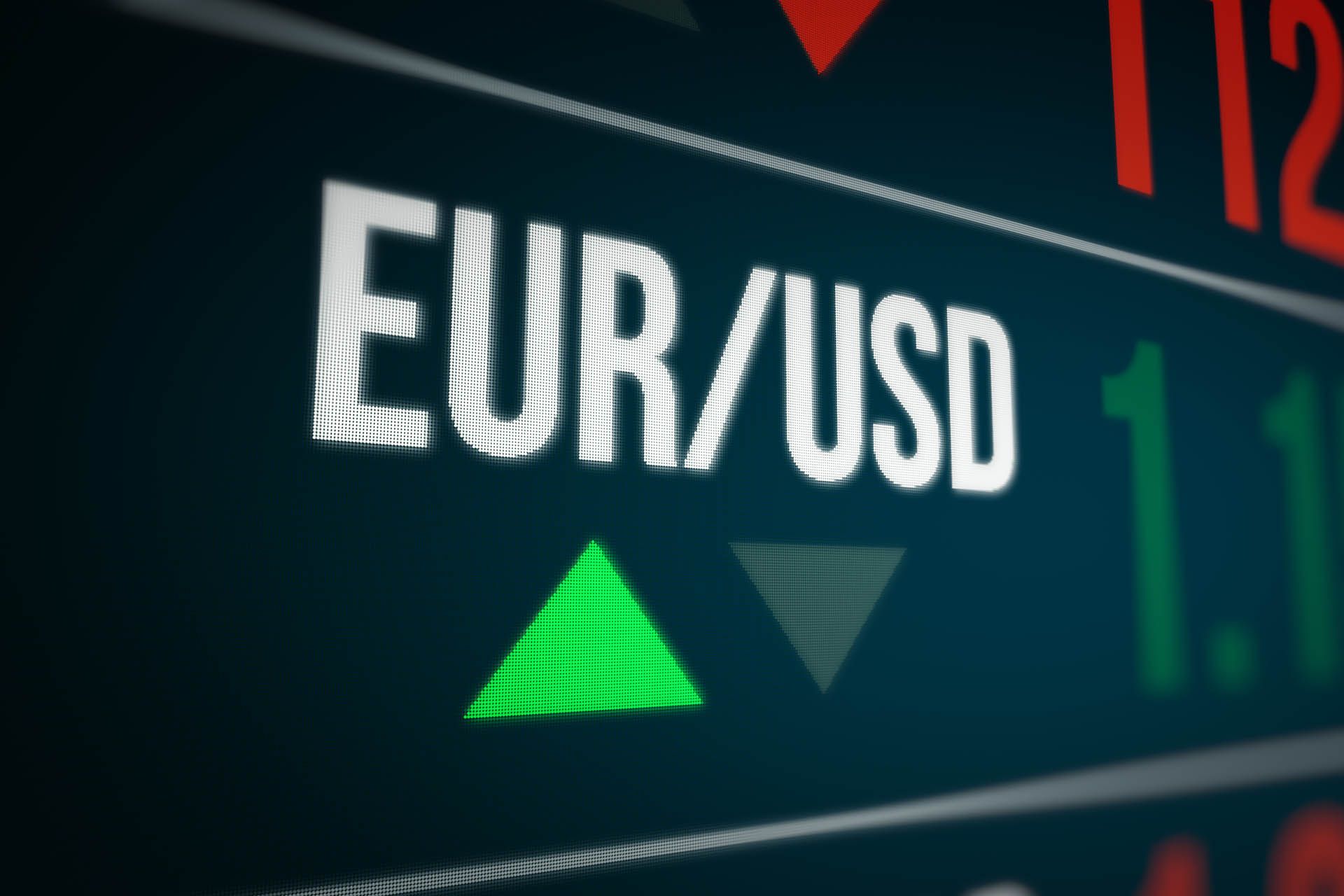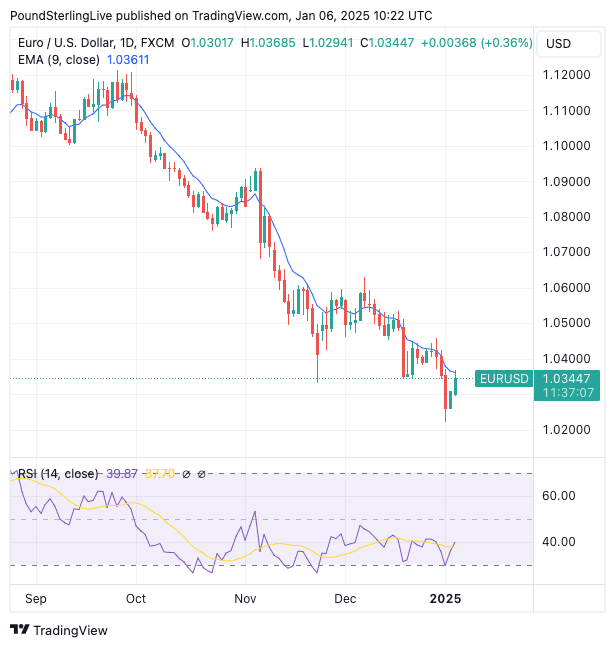Euro's Journey to Parity With U.S. Dollar Continues
- Written by: Gary Howes

Image © Adobe Images
The Euro to Dollar exchange rate (EUR/USD) is on a journey to parity, but we could see some relief this week if Friday's U.S. job data fails to cross a high bar.
The Euro fell to its lowest level in two years against the Dollar last week amidst another upshot in the U.S. Dollar, with all indicators suggesting the exchange rate is on course to test 1.0 and lower.
EUR/USD fell to 1.0222 last week but is now looking to record a second consecutive daily gain, as it quotes near 1.0353 at the start of the first full week of 2025 trade.
The exchange rate has risen to meet the nine-day Exponential Moving Average (EMA), which suggests it has recovered from some of the oversold conditions seen in the previous week. Incredibly, this nine-day EMA has acted as a resistance layer to EUR/USD strength since October. This technical indicator is pointing lower, suggesting there might be little let-up from the downside pressure.
It's hard to be anything but bearish on Euro-Dollar under the current technical and fundamental macroeconomic setup and recovery potential from here is limited. The exchange rate can consolidate around 1.03-1.04 in the near term as markets await a trigger for the next leg lower.
While much of the market might have been on a break over the Christmas and New Year period, there was no relenting for the Euro-Dollar, which extended a selloff that has been intact since October. Recent losses followed a renewed spike in European gas prices to two-year highs.
Above: EUR/USD at daily intervals. The trend remains to the downside.
European fundamentals are difficult for euro sellers looking to buy the buck and contrast notably to those of the U.S., where the economy remains in fine fettle. Gas market dynamics epitomise the stark divergence in economic fortunes: Europe faces headwinds amidst rising gas prices, while the U.S. receives tailwinds as it is the U.S. that has stepped into the void left by Russia in Europe's gas market.
Friday's non-farm payroll report is the marquee data release of the coming week, and strength here could push the Euro-Dollar exchange rate to fresh lows.
Analysts expect U.S. job gains to have remained elevated in December at 180k, registering only a modest slowdown from a 227k print in November.
Leading survey indicators have improved lately, confirming the U.S. economy's strong standing, which is consistent with ongoing U.S. Dollar strength.
The market is, nevertheless, well positioned for a strong job reading, and there is the chance of a retreat in USD if the data meets expectations or comes in softer.
This can allow EUR/USD some relief into the weekend.
There will be a host of U.S.-centric events to watch before we get to Friday's job report. The Federal Reserve's Cook is due to give comments on the interest rate outlook on Monday, while U.S. S&P Global PMI survey data for December will provide a snapshot on ongoing U.S. economic strength.
Tuesday brings ISM PMI data, which tends to be of more interest than the S&P Global version. Job opening data is also due for release.
Wednesday sees the Fed's Waller speak and the release of the minutes of the Fed's December meeting, at which it cut interest rates but warned it was less likely to do so in 2025, a communication which pushed the Dollar higher.
Thursday sees the Fed's Harker, Bowman and Schmid speak. The overall theme should be one in which they communicate that the economy is strong and does not need interest rate cuts for support, as this could risk raising inflation.
There is much uncertainty in the outlook as Donald Trump prepares to return to the White House. For now, analysts think Trump will bring inflationary policies, which will require the Fed to forgo further rate hikes.
All this is supportive of the Dollar.
In the Eurozone, the focus is on German inflation data for December, which will provide an important hint of where we can expect Eurozone data to be tomorrow.
Last week saw the Euro firm after Spanish inflation for December beat expectations, which, importantly, was also due to core inflation rising more than expected. We would expect downside risks to GBP/EUR if German data beats expectations.
Analysts expect Eurozone HICP inflation tomorrow to rise to 2.4% year-on-year in December from 2.2% in November.
However, analysts don't think this would be enough to upend expectations for further European Central Bank (ECB) interest rate cuts, which can limit any EUR upside.
"Most importantly, we expect the monthly price increase in core inflation to once again be compatible with the 2% target when annualised. The data is thus expected to support the case for continued rate cuts by the ECB," says Magnus Poulsen, Assistant Analyst at Danske Bank.
Thursday sees the release of the ECB Economic Bulletin, which should indicate expectations for the region's economy to remain under pressure and consistent with the need for further interest rate cuts.





